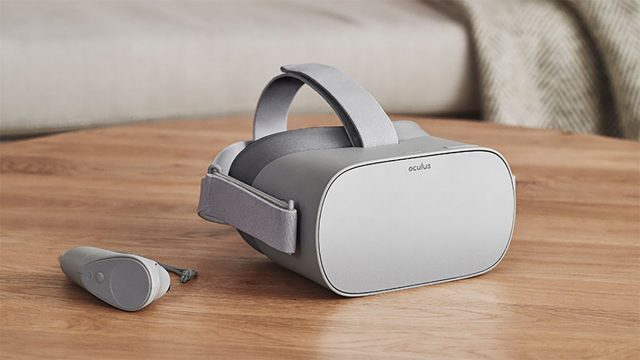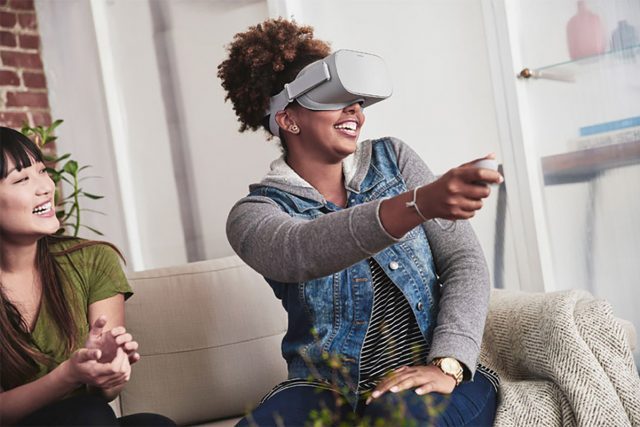On stage at Oculus Connect 4 today, Oculus revealed the Oculus Go headset, the company’s affordability-focused standalone VR headset.
Facebook CEO Mark Zuckerberg introduced the new Oculus Go headset today during the Oculus Connect keynote. The headset is a low-cost, all-in-one standalone headset which doesn’t rely on a smartphone or a computer; everything needed for the VR experience is built into the headset. Price at $200 and launching in “early 2018,” the headset aims for affordability.
Oculus Go is not the continuation of the standalone Santa Cruz prototype that the company revealed last year. Instead, Oculus Go is more similar to mobile VR headsets like Gear VR, featuring rotational-only tracking (3DOF) on both the headset and the controller. Santa Cruz, on the other hand, will be a more expensive standalone headset that aims for a higher-end market, featuring positional (6DOF) tracking on both the headset and controllers.

Though it doesn’t look it, the Oculus Go headset has integrated audio, meaning players will be able to hear the virtual world without putting on a separate pair of headphones. The speakers are built directly into the headband. There’s also a 3.5mm jack for private listening or higher-end headphones.

Oculus says the headset uses a “fast-switch LCD” at 2560×1440, which the company says has a much better fill-factor than OLED, helping to eliminate the screen door effect. The headset is said to use Oculus’ “next-generation” lenses, “offering a wide field of view with significantly reduced glare.”
Oculus Go will use the same Oculus app platform as Gear VR, and uses the same input model, which means all mobile Oculus apps are cross compatible with both headsets.






